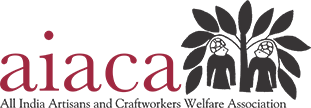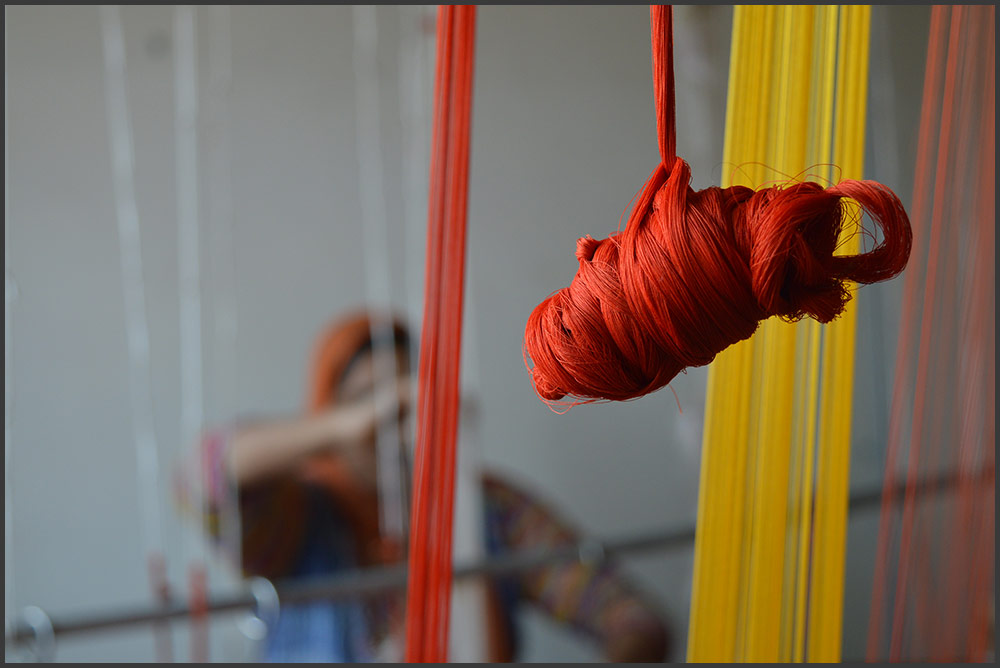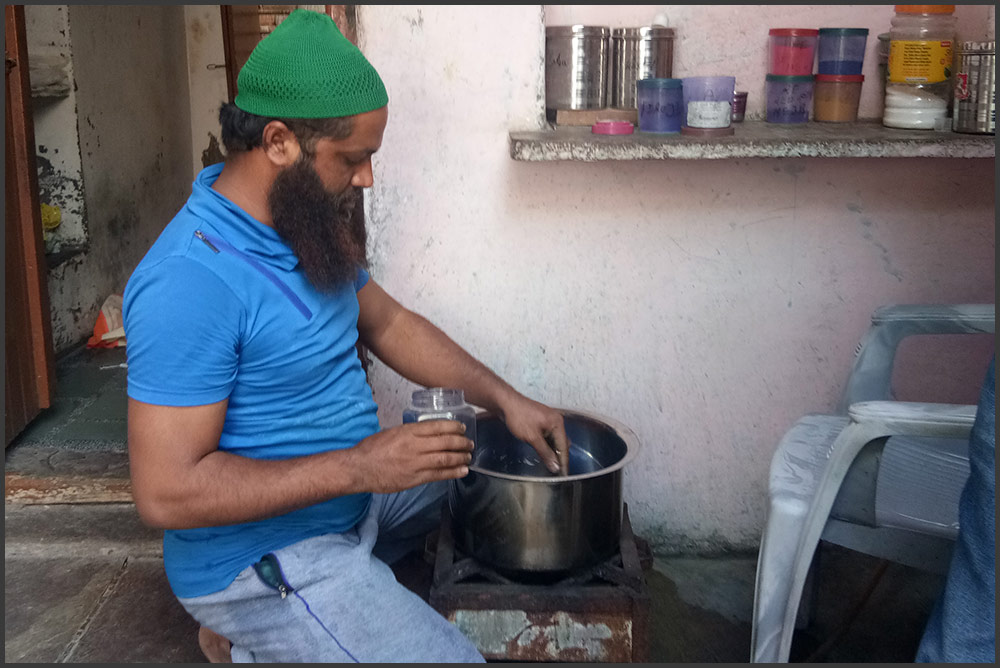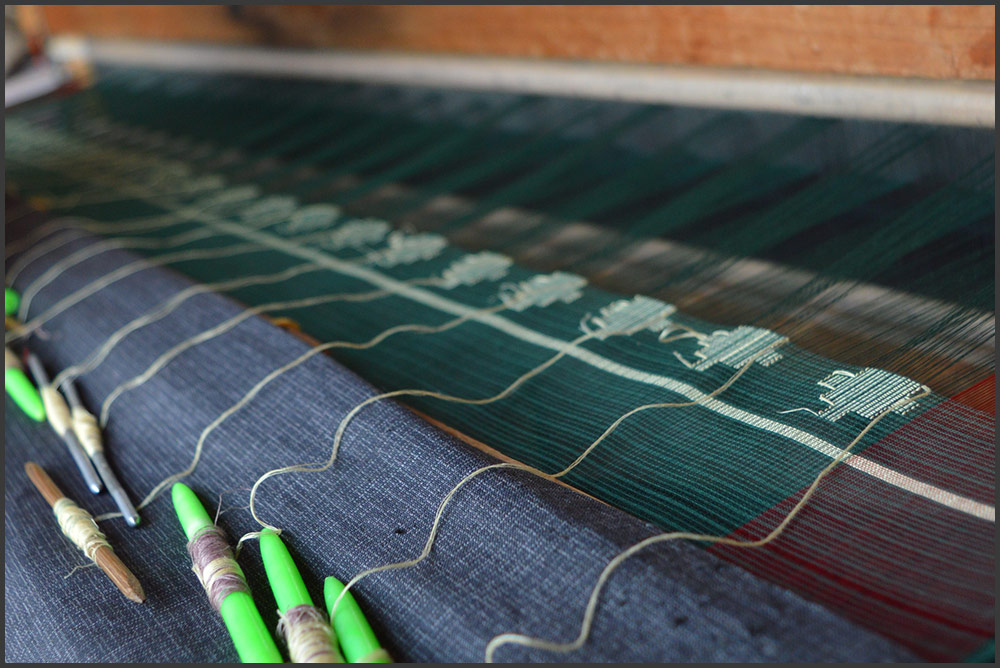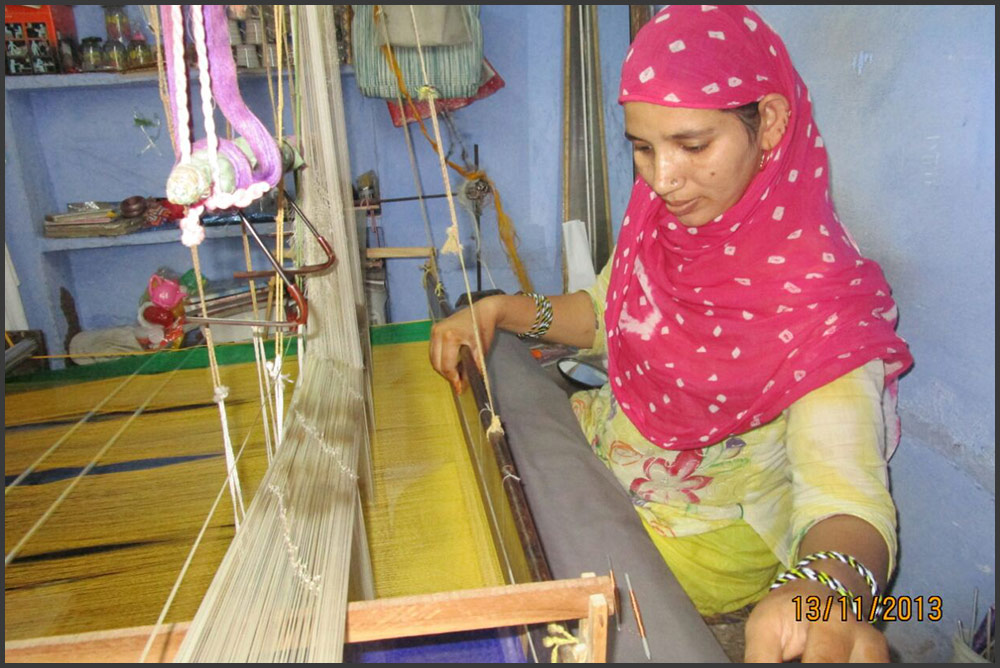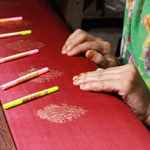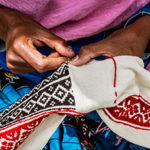
AIACA works in Kota with the mission of enabling Kota Women Weavers Organisation (KWWO), a registered Society of more than 1000 women weavers belonging to the Ansari community, to access greater market share and profit through facilitation of business support services, skill upgradation, design innovation and effective organisation management. The goal is to ensure sustained and dignified livelihood for the rural women handloom weavers as well as continuation of this unique craft.
Kaithoon, a small village on the outskirts of the city of Kota in southern Rajasthan is home to the renowned fabric of Kota Doria. This fine fabric made of a blend of silk and cotton has a unique check like pattern.
The process of making Kota Doria starts with bleaching, dyeing, and starching fine counts of yarns. Eight threads of silk and six threads of cotton are placed alternately in warp and weft to form the check pattern locally called khat. The width of the entire fabric is about 48 inches, containing about 300 khats. The designs are plotted on a graph and later transferred on a harness known as jaala, which is a series of strings suspended on a beam that help in developing intricate motifs along with the khats. These motifs are created using small bobbins or tillis of zari or dyed silk yarn.
AIACA has organized the women weavers in self-help groups, have enabled them to open bank accounts, assisted in saving and credit, as well as in collective working. The women weavers who are already highly skilled have been trained in design innovation and product diversification and a collection has been developed which is owned by the weavers of KWWO. This is the first time that these small women weavers have designs, collection and stock of their own that they can showcase independently to the markets. Through this new range of products, they have also been directly linked to exhibitions and retail buyers, wherein they have started enjoying improved income and a profit share. Parallel to the development of business capacities of the cluster, AIACA is also strengthening the governance of KWWO so that they are able to sustain their business better.
In addition to the women weavers, AIACA also started working with the local dyers. Since, substantial bulk of yarn is dyed locally in Kaithoon using chemical dyes, it was a major environmental issue faced by the cluster. In order to address this, the dyers were trained in using azo-free and natural dyes. The weavers were sensitized on developing woven collections using azo free dyes in order to attract conscious buyers and markets.
The dyers were also trained in using simple everyday household materials rather than complex chemicals as dyes. They were familiarized with the dyeing manual and shade card published by Ministry of Textile for further reference.
The dyers have learned and practice easy processes of dyeing and fixing. They use azo-free, chemically stable and safe dyes. They also practice more efficient use of dye and water by following volume, weight calculation and time-temperature charts.
The collection and the entire product range within this project follows sustainable production systems and chemical free process.
